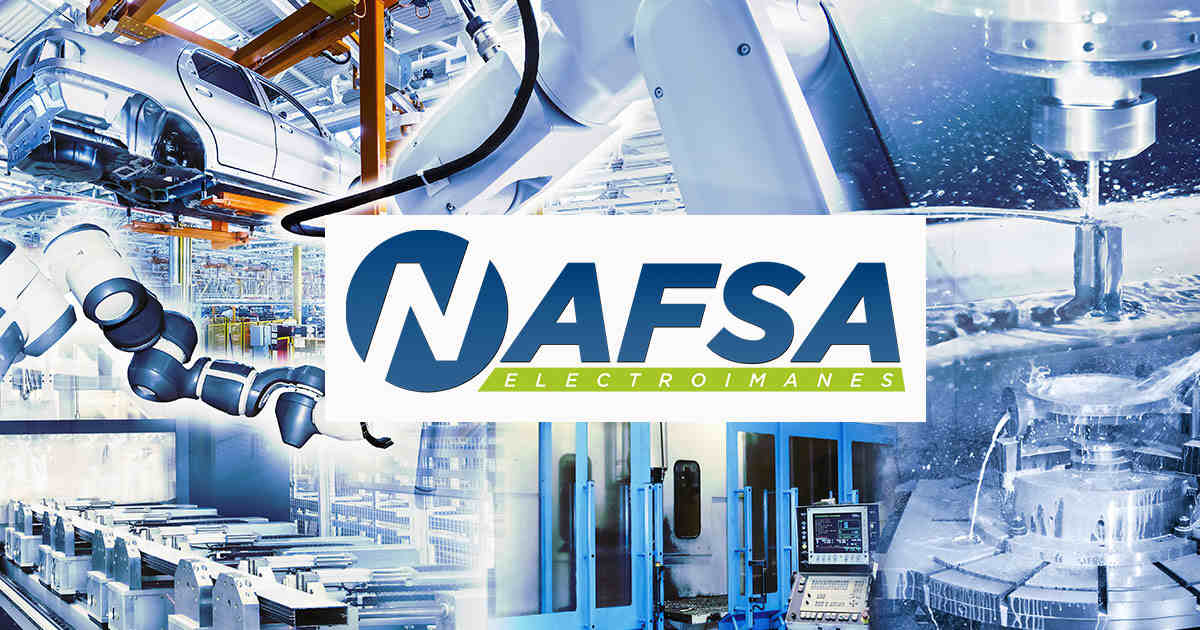
NAFSA electromagnets explained...
To the average person, the term ‘Electromagnet’ is usually linked to a big lump on the end of a crane, picking metal or old cars up and transferring them into the next stage of processing plants.
In our world here at OEM Automatic, an electromagnet is somewhat smaller but no less impressive. Whether holding a product down during fabrication or operating a lock or part of a machine build - there are many possible applications that NAFSA electromagnets can be used for.
Two basic designs are available - permanent magnet or coil wound.
Permanent magnet
The permanent magnet is exactly what it sounds like. A permanent magnet within the electromagnet will keep hold of the work piece without voltage. This design is ideal for passive locking systems and designs that call for a hold to be in place for a long time, with no residual current being drawn. The magnetic force is broken when a voltage is applied to a coil within the electromagnet, breaking the magnetic force and releasing the work piece.
Coil wound
Coil wound electromagnets work in reverse to the permanent magnet unit. The electromagnet offers no magnetic attraction until voltage is applied to the coil, at which point it attracts the workpiece and holds whilst under voltage. Removing the voltage releases the work piece
Both permanent magnet and coil-wound electromagnets offer various physical sizes, with holding forces up to 7000+ Newtons (roughly 700Kg) for held pieces featuring a flat smooth surface.
The smooth surface ensures maximum contact area between the electromagnet and the object being held, thus allowing the greatest holding force to be achieved.
Using a purposely designed electromagnet, it is possible to hold round bars from 120 to 250mm diameter with a force of up to 8000N (roughly 800Kg) per metre.
Typical applications
- Locking systems – doors, panels, frames
- Holding devices – machining jigs, assembly stages, mould workpieces
- Brakes & lifting devices require analysis into every application for health and safety reasons
NAFSA
With electromagnets designed and built at NAFSAs’ facility in Spain, a full technical team are available to assist with sizing, technical calculations and support.
As a partner to NAFSA in many countries, including the UK, we at OEM Automatic are happy to help with any application requirements for electromagnets!
To find out more about NAFSA electromagnets, email us at [email protected]
BlogRelated Products

NAFSA - VM series
- Magnetic holding under no power
- Class B winding (130ºC)
- 100% duty cycle
- Up to 2000N force
- Customer specific version available

NAFSA - VEM series
- Power to create holding force
- Class B winding (130ºC)
- 100% duty cycle
- Up to 7104N force
- Customer specific version available

NAFSA - VM/ND series
- Magnetic holding under no power
- Class Y winding (90ºC)
- Up to 40% duty cycle
- Up to 2254N force
- Customer specific version available

NAFSA - ERM series
- Rectangular holding magnet
- Class B winding (130ºC)
- 100% duty cycle
- Up to 7450N force
- Customer specific version available

NAFSA - ERMI series
- Rectangular holding magnet
- Class Y winding (90ºC)
- 15% duty cycle
- Up to 3000N force
- Customer specific version available

NAFSA - BP1000/100 series
- Rectangular holding magnet
- Class B winding (130ºC)
- 100% duty cycle
- Uo to 8000N force
- Customer specific version available



